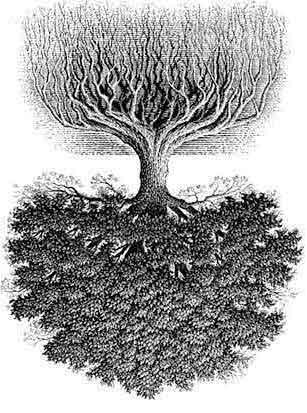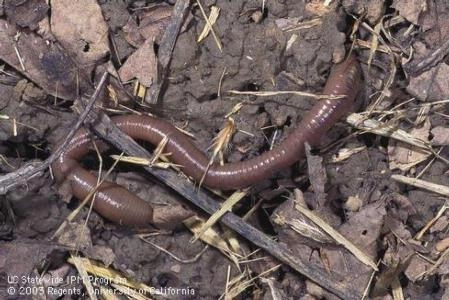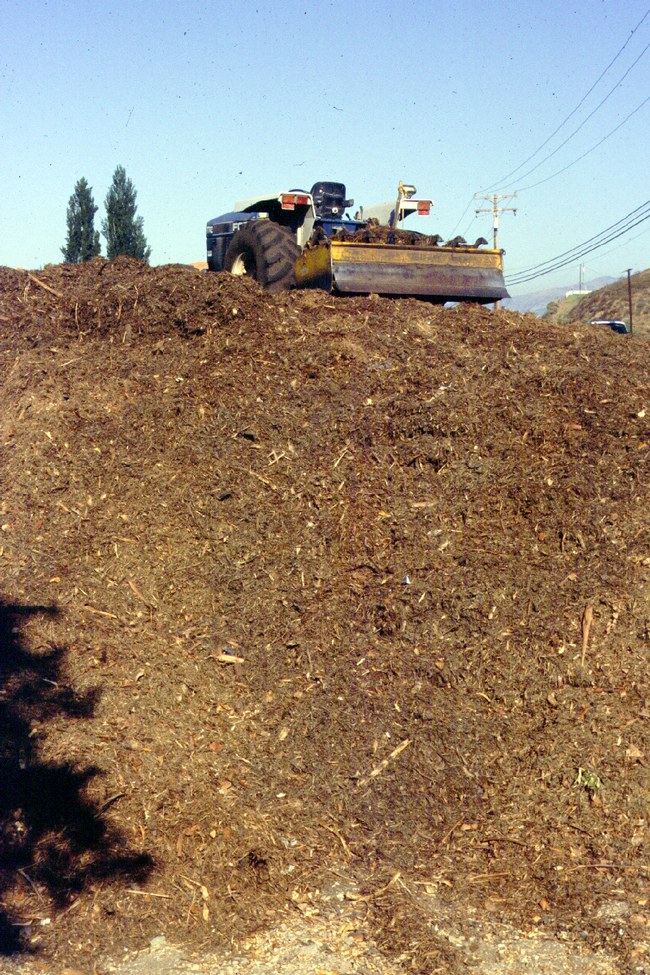
Posts Tagged: organic matter
Mulch. Read Some About It!
Two questions and comments came up last week about the use of mulch in orchards. The first is that mulch is two edged. It serves to combat erosion and root rot, but it can also burn. Mulch and wood piled up against tree trunks and near trunks can cause damage to those trunks. A Fillmore grower actually goes through the orchard with a blower to move mulch away from trunks when alerted to fire. On the other hand, irrigated orchards have been shown to be effective at suppressing fire encroaching on homes.
So where to read more about fire? About mulch? Check out some of the blogs from the past.
Phire, Phlood, Phreeze and Fytophthora
//ucanr.edu/blogs/blogcore/postdetail.cfm?postnum=22760
Mulch and green waste applied to avocado orchards and More
Green Waste, Yard Waste, Whatever You Call It- It has Simple Rules for Use
//ucanr.edu/blogs/blogcore/postdetail.cfm?postnum=13093
A Safer Source of Inexpensive Orchard Mulch
//ucanr.edu/blogs/blogcore/postdetail.cfm?postnum=12867
//ucanr.edu/blogs/blogcore/postdetail.cfm?postnum=6458
Cellulase Production by Various Sources of Mulch
//ucanr.edu/blogs/blogcore/postdetail.cfm?postnum=6809
A Caution on Free "Compost/Mulch"
//ucanr.edu/blogs/blogcore/postdetail.cfm?postnum=11712
A Safer Source of Inexpensive Orchard Mulch
//ucanr.edu/blogs/blogcore/postdetail.cfm?postnum=12867
Mulch, Avocados and the Home Garden
//ucanr.edu/blogs/blogcore/postdetail.cfm?postnum=14906
Mature Compost Does NOT Kill Phytophthora
//ucanr.edu/blogs/blogcore/postdetail.cfm?postnum=19856
Use of Mulch in Organic Orchards Called into Question
//ucanr.edu/blogs/blogcore/postdetail.cfm?postnum=21394

mulch
Green Side Up. Brown Side Down. Planting a Tree
A recent letter which followed a farm visit to another grower and finally a phone call about planting an avocado tree from another grower. The basics of planting are often overlooked and we should revisit them to make sure we know how to do the basics.
The letter:
I am going to plant some avocado trees on a slope. I will be drilling a hole with an 18 inch auger about three feet deep.
I have lots of wood chips from avocado trimmings. Should I mix some avocado wood chips with the soil to insure good drainage when I plant the new trees?
Or should I mix in some compost to help good drainage? Some areas here have poor drainage because of clay soil.
The response:
DO NOT put anything in the planting hole. It makes drainage worse. And if its not fresh the decomposing gases will kill the roots. And gradually over time, the organic matter decomposes and the tree sinks deeper into the ground, covering the graft union and the tree dies. I[m glad you asked. Someone is spreading the word that this is how to plant. It's a disaster if you do this. DON'T. You think you are doing everything right, but it is wrong. There's physics and biology involved and a good horticulturist knows better because of experience. Mulch applied to the soil surface is not the same as organic matter – planting mix put in the hole.
And watch out for the auger. Especially in heavy soils, the auger can seal the sides of the hole, making an impenetrable surface to the roots. The sides need to be scrapped or scratched to make sure the seal hasn't been created. And don't go 3 feet deep. Go to the depth of the planting sleeve. When you go deeper, the refill soil will compact and the root ball sinks, burying the crown.
From the UCR Avocado website:
http://ucavo.ucr.edu/general/answers.html#anchor1423493
Planting
The avocado is a shallow rooted tree (most of the feeder roots are in the top 6" of soil) which needs good aeration. They do well if mulched with a coarse yard mulch. Current recommendation is to put approx 1/3 cu yd per tree when planting. When applying the mulch, be sure to stay about 6-8 inches away from the trunk of the tree. They like the soil pH around 6 - 6.5. If you can, plant your tree in a spot protected from wind and frost. Also, avocado trees typically do not do well planted in lawns so try to plant your tree in a non-lawn area.
- When should I plant my avocado tree? Avocado trees like warm ground. Ideally, they should go into the ground from March through June. If they go in during the summer there is always the risk of sun damage because the trees can't take up water very well when young.
- How big a hole should I dig? As deep as the current root ball and just as wide as the width plus a little extra so you can get your hands into the hole to plant it. Don't drop the tree into the hole, the roots don't like that, ease it into the hole. The avocado root system is very sensitive and great care should be taken not to disturb the root system when transplanting. If the tree is root bound, however, loosen up the soil around the edges and clip the roots that are going in circles.
- Should I put some gravel, crushed rock or planting mix at the bottom of the hole? No. Do not put gravel or anything else like planting media in the hole. The sooner the roots get out into the bulk soil, the better the tree will do. Planting mix creates a textural difference between the root ball and the bulk soil and causes water movement problems. Remember, there are 5 million acres of tree crops in California planted without planting mix.
- I have a heavy clay soil. Should I elevate the tree in a mound for better drainage? Yes, good idea. Make the mound 1 to 2 feet high and 3 to 5 feet around. Put down 20 pounds of gypsum spread around the base of the tree and mulch the area with 6 inches of woody mulch keeping the material about 6-8 inches away from the tree trunk.
- What do you mean by a "coarse yard mulch" and where can I get some? Redwood bark will work and maybe cocoa bean husks and shredded tree bark. Need something that is woody and about 2 inches in diameter. Coarse yard mulch is available at some garden supply centers. Be sure it is COARSE, not fine, yard mulch - and disease-free to prevent introducing diseases to your tree (like root rot). Another source of coarse mulch would be a tree trimming operation, like Asplundh or Davy. They usually have material that has been pruned from the tops of trees and doesn't contain any diseased roots. Just go through the yellow pages looking for tree services.
These directions hold true of all trees, citrus, avocado, mango..............And for a nice discussion of avocado planting and root rot, go to:
http://www.avocadosource.com/journals/avoresearch/avoresearch_02_01_2002.pdf

upside down tree
Dog Vomit Fungus
Avocado growers have been ecstatic at fruit prices and are walking their groves more avidly, checking things out and seeing lots of things they don't normally see. A recent grower find has been a blob of Fulgio septica - ‘Dog Vomit' or ‘Dog Fungus'. It's not vomit, it's not a fungus, but a slime mold that lives off the organic matter littering orchards and in mulched gardens. After the rains and when it starts to warm up, the spores of these non-animal, non-plants germinate and start moving around. They aggregate into a mass, called a plasmodium, a super individual that starts out as a yellowish, spongy mass that can move in a slow, amoeboid-like fashion. It gradually hardens and can take on the brownish-tan coloring seen in the image below. As it dries, it breaks up and blows away. It won't do harm to living plants, simply feeding on dead material. It will gradually disappear. So, as you walk your orchard or your backyard, enjoy the unusual appearance of a rainy year member of the web of nature.

dog vomit fungus
Earthworms, Soil Productivity, Citrus and Avocado
There are 4,000 species of earthworms grouped into five families and distributed all over the world. Some grow uo to 3 feet long, while others are only a few tenths of inches. We call them nightcrawlers, field worms, manure worms, red worms and some people call them little diggers.
In California, we have some native species of earthworms, but in many cases non-native introduced species have come to dominate. The predominant native species belong to the Argilophilus and Diplocardia while many of the non-native are of European in origin in the Lumbricidae family. Many of these non-natives were probably introduced by settlers bringing plants from home, which had soil containing the worms. A survey of California earthworms by the US Forest Service can be found at:
https://www.fs.fed.us/psw/publications/documents/psw_gtr142/psw_gtr142.pdf
This is a wonderful description of earthworm biology and their occurrence in the landscape.
When digging in citrus orchards, it is common to find earthworms in the wetted mulch under tree canopies. Many of our citrus orchards were initially established by “balled and burlap” nursery trees that brought worms along with the soil. In the case of many avocado orchards, on the other hand, it can be rare to find earthworms in orchards. Most avocado orchards have been established since the 1970s when potting mixes and plastic liners were the standard practice and worms were not part of the planting media. Even though there is a thick leaf mulch in avocado orchards, the worms have not been introduced, and it is rare to find them.
Numerous investigators have pointed out the beneficial effects of earthworms on soil properties. One of the first of these observers was Charles Darwin who published Earthworms and Vegetable Mould in 1881. He remarked on the great quantity of soil the worms can move in a year. He estimated that the earthworms in some of his pastures could form a new layer of soil 7 inches thick in thirty years, or that they brought up about 20 tons of soil per acre, enough to form a layer 0.2-inch-deep each year.
Earthworms, where they flourish, are important agents in mixing the dead surface litter with the main body of the soil. They drag the leaves and other litter down into their burrows where soil microorganisms also begin digesting the material. Some earthworms can burrow as deeply as 5 to 6 feet, but most concentrate in the top 6 to 8 inches of soil.
The worm subsists on organic matter such as leaves and dead roots near the soil surface. The earthworm ingests soil particles along with the organic matter and grinds up the organic matter in a gizzard just as a chicken does. This is excreted in what we call worm casts. The castings differ chemically from the rest of the soil, as they are richer in nitrogen, potassium and other mineral constituents.
Castings are a natural by-product of worms. When added to normal soils in gardens or lawns, they provide the same kinds of benefits as other bulky organic fertilizers. Castings today are not commonly used as fertilizer by commercial plant growers because of their cost relative to other fertilizers. However, castings are used by some organic growers and are sold commercially as a soil amendment or planting medium for ornamental plants grown in pots.
The physical soil churning process also has several important effects:
-Organic residues are more rapidly degraded with the release of elements such as nitrogen, sulfur and other nutrients.
-Some of the inorganic soil minerals tend to be solubilized by the digestive process.
-Extensive burrowing improves soil aeration.
-Burrowing can improve water penetration into soils
-The earthworm carries surface nutrients from the soil surface and imports them into the root zone of the plant.
Although earthworms are considered beneficial to soil productivity, few valid studies have been made to determine whether their presence will significantly improve plant growth. This may seem odd since many of us have learned from childhood that worms are good. It is something like the chicken and the egg analogy. The conditions that are conducive to earthworms are also ideal for plants. Both plants and worms need temperatures between 60 and 100 degrees F for good growth; both need water, but not too much or little; they both require oxygen for respiration; and they do not like soils that are too acid or basic or too salty. By correcting soil conditions that are unfavorable for one will also improve the outlook for the other. The earthworm is a natural component of the soil population. If the soil is properly managed this natural population will thrive. In this sense, the presence or absence or earthworms can be an indicator of the "fertility" of one's soil.

earthworm
Cellulase Production by Different Mulch Sources
Biological control of Phytophthora cinnamomi in avocadothrough the use of mulches was identified by an Australian grower and later described as the "Ashburner Method" by Broadbent and Baker. The technique uses large amounts of organic matter as a mulch along with a source of calcium. Control of avocado root rot in the Ashburner method was attributed to the presence of Pseudomonas bacteria and Actinomycetes. Multiple antagonists are more likely the cause of biological control, since no single organism has been found to be consistently associated with soils suppressive to P. cinnamomi.
The use of organic mulches has multiple effects, such as altered soil nutrient and water status and improved physical structure. Any improvements in plant status resulting from improvements in the growing environment can improve plant health. The effect of organic amendments on soil physical and chemical properties can vary considerably depending on soil texture and the environment. One of the most consistent effects of organic amendments is an increase in biological activity. Increases in organic substrate lead to increased fungal and bacterial populations. In numerous cases, this increase in biomass has been associated with disease suppression. This biological control can be ascribed to several mechanisms: competition, antibiosis, parasitism, predation and induced resistance in the plant.
The microbial biomass is responsible for release of enzyme products and polysaccharides in soils. The microbially-produced enzymes cellulase and glucanase have been demonstrated to have a significant effect on Phytophthora populations. This mechanism of antibiosis is possible because the microbes are releasing these enzymes to solubilize organic matter. Unlike other fungi, Phytophthora have cell walls that are comprised of cellulose and in the process of decomposing organic matter with enzymes, an environment is created that is also hostile to the pathogen.
In order to see if there might be potential differences in organic materials being better at combating avocado root rot, a little field trial was established with 23 different types of materials (see types on Graphs 1 and 2). The mulch materials were obtained from nearby hedges and chipped or obtained from commercial sources of mulch. Some of these materials would be difficult to get in large amounts, such as manuka (Leptospermum scoparium), but others are commercially available chipped greenwaste. The materials were then spread on the ground to a depth of five inches, in separate plots that were 36 X 36 inch squares. Decomposition was measured over a two year period and then cellulase was measured in the mulch, at the soil / mulch interface and at a two inch depth in the soil at the end of 2 years.
Since cellulase production is part of the decomposition process, the rate of decomposition should be a partial indicator of the amount of cellulase present. Graph 1 shows the depths of various materials at the site after one and two years of decomposition. After a mulch application there is generally settling due to rainfall-caused compaction, but much of the decline by the second year is due exclusively to decomposition. The more recalcitrant materials, such as bark, wood chips and sawdust have barely lost half their depth after two years, while others such as shredded eucalyptus, manuka, avocado and willow are less than 20% of their initial depth. Much of the shredded/chipped material, such as eucalyptus had a significant fraction of leaves in the mulch. The wool disappeared a little after one year. The greenwaste + chicken manure compost is nearly the same depth as the wood chips, since it is a material that had gone through a decomposition process prior to its application and much of the easily digestible materials had already been decomposed.
The rate of decomposition has some bearing on the rate of cellulase production (Graph 2). Eucalyptus and manuka had the two greatest rates of decomposition and show the highest levels of cellulase production. The cellulase levels were consistent with all the different mulch materials. Using decomposition rate alone is not a complete indicator of cellulase production since, poplar, willow and avocado had high rates of decomposition, but their cellulase rates were half those of manuka and eucalyptus
It is clear that the cellulase effect is limited to the layer of mulch and not to depth within the soil. There is some effect at the soil surface, but at 5 cm. cellulase activity drops to background levels (Graph 2). There is earthworm activity at the test sites and one idea was that earthworm incorporation of organic matter would move the cellulase production into the soil. Maybe with further time this would occur. As it is, when mulches are applied to avocado, the roots tend to proliferate in the mulch, out of the soil where the cellulase activity is the least.
Something to keep in mind is that we do not know what levels of cellulase are necessary to control the root rot fungus. It may be that levels seen with pine bark are more than adequate. Also we have measured cellulase production at only one time in a two-year period and it is quite likely that this is not the best snapshot of what is happening before and after. A further reminder is that cellulase is only one of the many by-products associated with decomposition and many of the antagonistic properties that are associated with the microbial biomass are not being measured in this trial. Having developed this screening procedure what needs to be done next is to take high, medium and low cellulase producing mulches and challenge the fungus to verify that this is a good way to evaluate mulches.

mulch
